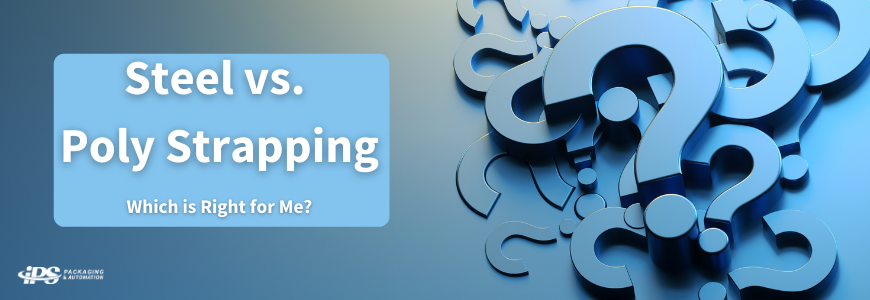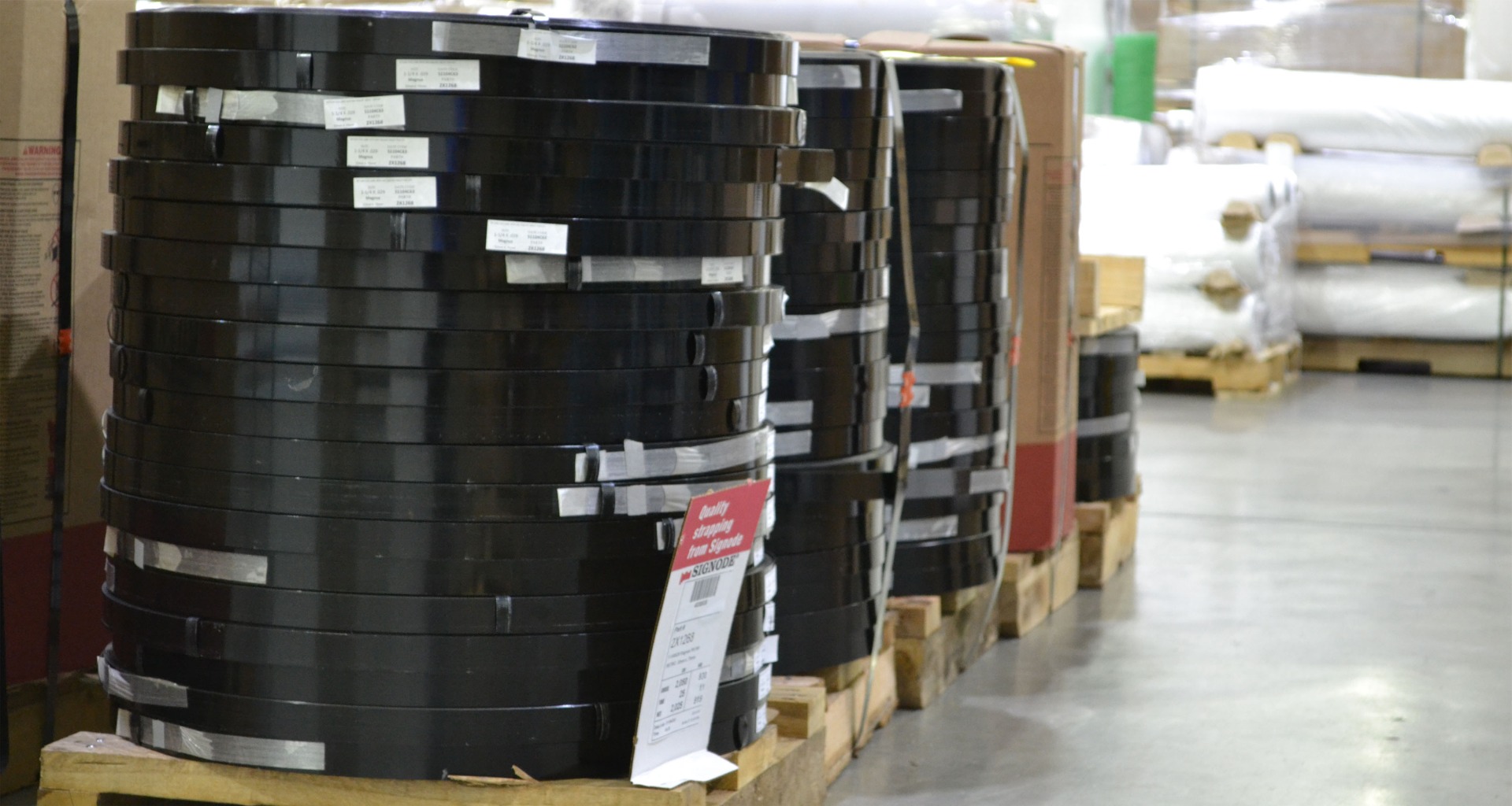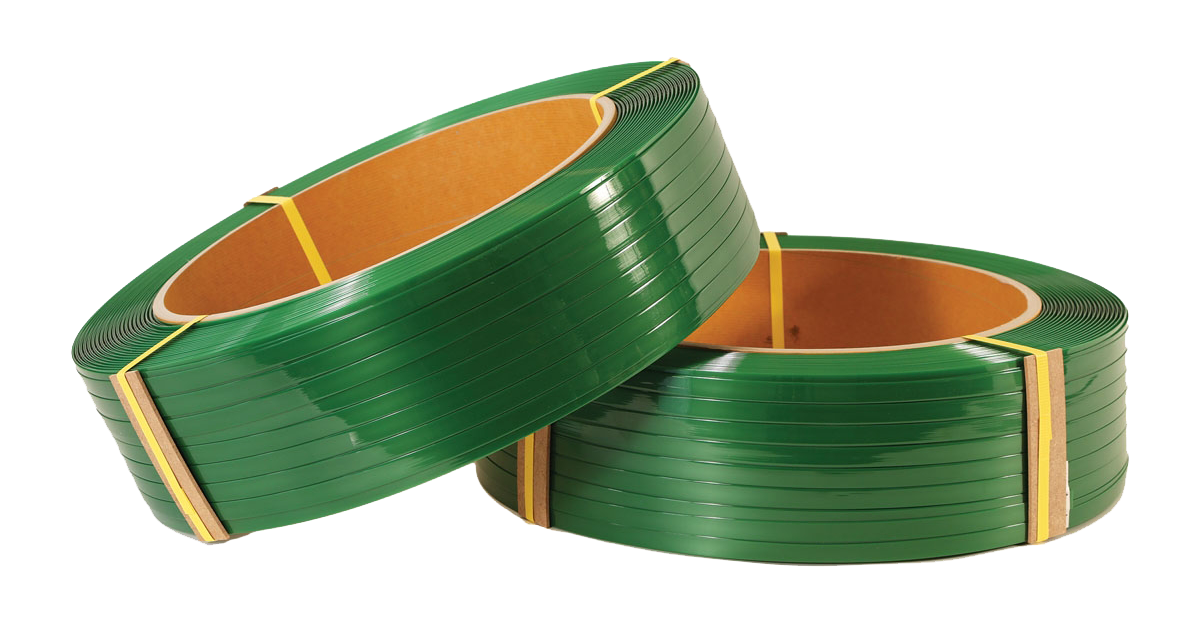
Steel vs. Poly Strapping: Which is Right for Me?
Strapping is an essential tool for packaging and palletizing operations worldwide. No matter what type you use, it is always used to wrap around palletized loads in order to keep them contained and safely on their pallets during storage and transportation. This prevents corrugated boxes and other products from falling off and becoming damaged or completely destroyed. Whether you’re just beginning to use strapping or are considering a change in your methods, it’s necessary to examine the different types available in in order to determine which will work best for your individual needs. There are three primary categories – steel strapping, polypropylene strapping, and polyester strapping, and the latter two are frequently grouped together and called poly or plastic strapping. Today, we’re breaking down steel vs. poly strapping to help you gain a thorough understanding of the advantages, disadvantages, and differences.
Steel Strapping
Of all the different types of strap, steel strapping, which is sometimes referred to as metal strapping, has been around the longest. In the past, it was the most commonly used across all industries. It comes with a wide range of benefits – it's the strongest of all varieties and offers the highest amount of tensile strength. Steel strapping comes in many widths, thicknesses, and finishes, such as paint, wax, or zinc, though wax transmits tension throughout the bundled load best.
Today, we usually only see metal strap used for the most heavy-duty applications that require outstanding strength and very little stretch or in situations where the products are sharp and/or hot. That being said, with the exception of industries like metal bundling, bricks, pavers, or baling wire, the popularity of steel strapping is on the decline.
The Details:
- High strength and low elongation
- Expensive and difficult to recycle
- Sharp edges can be dangerous
- Applied using manual or power strapping tools

Polypropylene Strapping
As one of the most cost-effective types, polypropylene strapping is a kind of plastic strap that works wonders for light- and medium-duty needs. It comes in many widths, thicknesses, and copolymers. Businesses regularly choose polypropylene strapping for its impressive elongation capability, even though it can experience dead stretch that cannot be corrected after exposure to constant stress.
Polypropylene strap has a tendency to lose approximately 50% of its applied tension after about one hour of use. This tension loss tends to increase as the surrounding temperature gets hotter, which is why it is necessary to factor storage and shipping environments into your decision making process when you select strapping.
The Details:
- Economical with high elongation and elongation recovery
- Low retained tension and can be damaged by environmental factors like heat
- Lightweight, but doesn’t work well on “solid” items
- Can be applied by hand, manual or power tools, or semi- and fully-automatic machines
Polyester Strapping
Of all plastic strap, polyester strapping is the most rigid with the strongest holding abilities. Because of this, many companies have made the switch from metal to polyester strapping. It boasts high retained tension for long periods on rigid loads, as well as outstanding recovery, both of which mean that the strap is very difficult to break after absorbing an impact.
Commonly, polyester strapping is used for heavy-duty needs. It is a great choice for any load that requires a high amount of retained tension throughout the supply chain process. Furthermore, it is less expensive, can be applied more easily, and is safer to handle than its steel counterpart.

The Details:
- Highest strength, most rigidity, and longest retained tension of all plastic strapping options
- Resists nicks and is easy to recycle
- Offers less elongation and tends to be more expensive than polypropylene
- Applied using manual and power tools or with a fully-automatic strapping machine
Which Strapping is Right for Me?
When deciding whether steel, polypropylene, or polyester strapping is best for your business, the most important element to examine is what kind of load you usually ship. Polypropylene strapping is an excellent choice for those who work exclusively in lightweight products and loads, and is especially beneficial due to its low cost and ease of use. For those who most often ship heavy-duty items and pallets, steel or polyester strapping will be the way to go, though if you are concerned about safety or expenses, polyester is the best fit. Additionally, it’s important to note that polyester strapping has quickly become the preferred option for many industries and applications.
When it comes to steel vs. poly strapping, IPS Packaging & Automation is here to assist no matter your choice. We can help you make the decision that best suits your business or guide you through a switch to a new type of strapping. Contact or call us today at (800) 277-7007 for more info!


